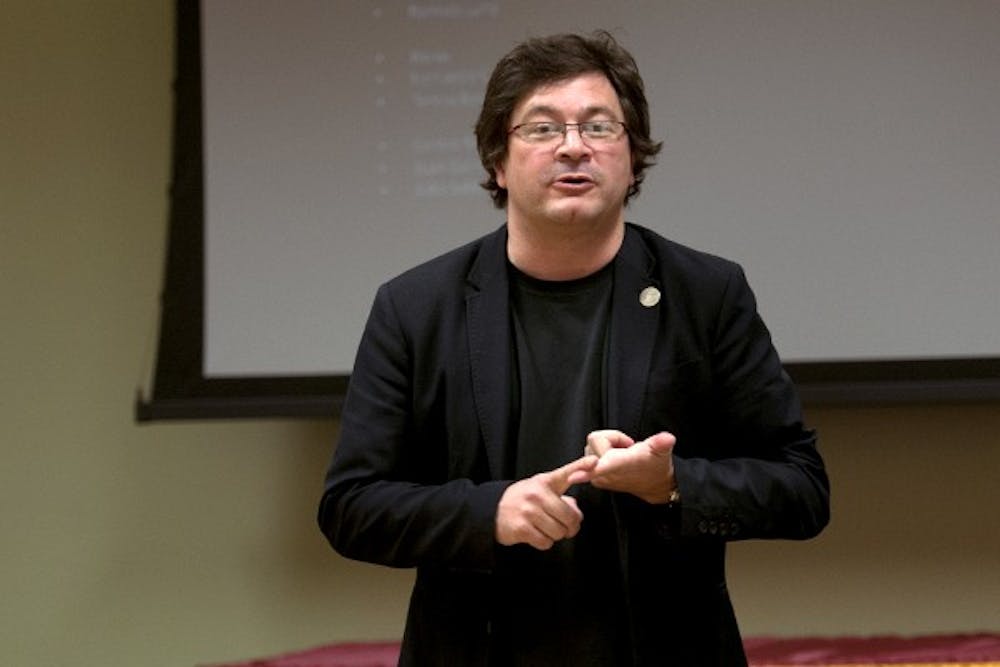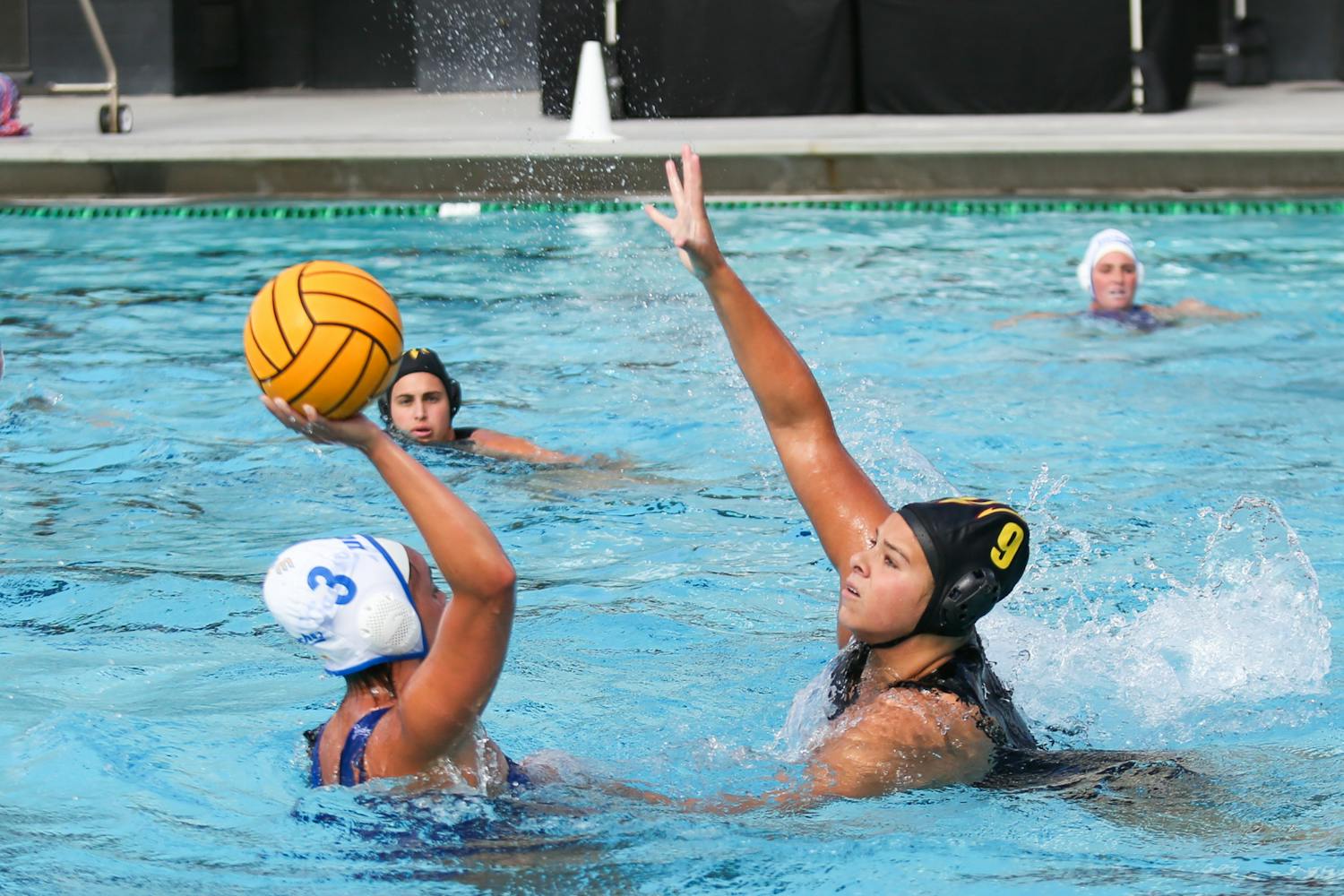 Juan Jose Diaz Infante gives a presentation on the Mexican Space Collective at ASU’s Tempe Campus on Wednesday, Jan. 29. The collective is a group of eclectic thinkers and artists whose goal is to create a satellite, named Ulises I. (Photo by Mario Mendez)
Juan Jose Diaz Infante gives a presentation on the Mexican Space Collective at ASU’s Tempe Campus on Wednesday, Jan. 29. The collective is a group of eclectic thinkers and artists whose goal is to create a satellite, named Ulises I. (Photo by Mario Mendez)
Juan José Díaz Infante, the director of the Mexican Space Collective, talked to ASU students Wednesday about his work with 11 other people to create Ulises I, the first Mexican satellite launched as a form of artistic expression.
The event, organized by the Center for Science and the Imagination, featured a discussion between Díaz Infante, CSI's director Ed Finn and Ariel Anbar, a professor at the School of Earth and Space Exploration.
A simple spur-of-the-moment idea can turn into one of the most unique projects, Díaz Infante said.
"The satellite is the instrument, not the artwork," he said.
When Díaz Infante was putting together the team, he said he looked for people with completely different backgrounds and outlooks on life. The collective includes a painter, a music composer, an artist who does not have any artwork and a man who speaks to whales.
"I was having a mid-life crisis," he said. "Instead of buying a convertible, I decided to build a satellite."
Díaz Infante said he named the satellite Ulises I after three figures in history: poet James Joyce, Mexican artist Ulises Carrión and the title character in Homer's "The Odyssey."
The project is conceptualized as an opera in the 21st century, Díaz Infante said.
Díaz Infante said he wanted to show the world that there are still new ideas put into action even when the Earth is in crisis.
Ulises I was launched on Dec. 12, the same day as the liturgical celebration of Our Lady of Guadalupe, an important figure in Mexico’s culture.
“Leave the limitations,” he said.
Finn said the decision to bring Díaz Infante to ASU was an easy one.
“I was excited about Juan’s project," he said. "He has an artistic moonshot perspective, which is what the CSI is promoting, (and) he has an imagination that is about finding a new access.”
Finn said he invited Díaz Infante to ASU because his approach went hand in hand with CSI'sProject Hieroglyph, which according to its website is "a space for writers, scientists, artists and engineers to collaborate on creative, ambitious visions of our near future.”
Anbar said more people should embrace Díaz Infante's approach to science by using imagination as the ground.
“Most of the world acts locally and thinks globally, but society should turn that around and act globally, then think locally,” he said.
Reach the reporter at kvstewar@asu.edu or follow her on Twitter @kvictoriaas




